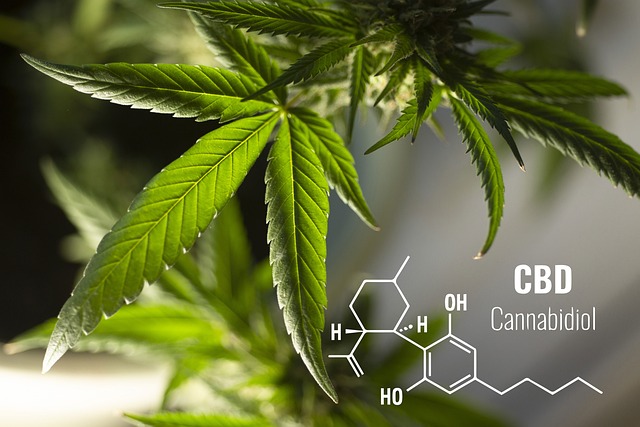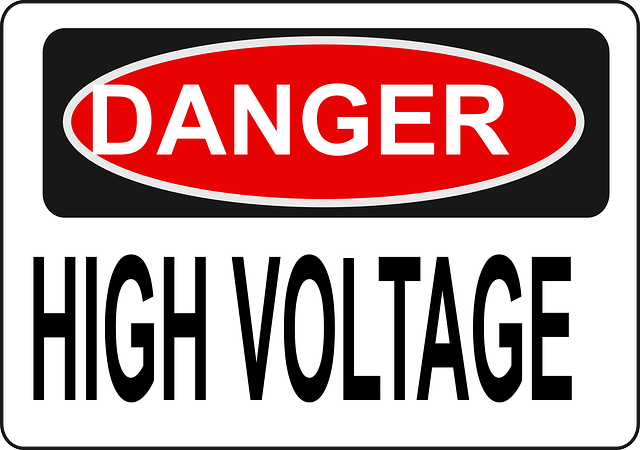High potency cannabinoids (HPCs) are gaining attention in medical research for their therapeutic potential across various health conditions, including chronic pain and inflammation, as well as neurological disorders. These compounds, which include THC, CBD, CBN, and THCV, work synergistically through the Entourage Effect, potentially offering more effective treatment options with fewer side effects than single-cannabinoid therapies. Current research is focused on understanding their mechanisms of action, improving production methods to ensure safety and efficacy, and developing novel formulations for better bioavailability. The integration of advanced technologies like AI and machine learning in cannabinoid research is expected to lead to the discovery of new cannabinoids with superior therapeutic benefits, further enhancing the potential of HPCs in personalized medicine strategies for a range of medical conditions. However, it's important to approach their use with caution, considering the potential risks and adverse effects, and under the guidance of healthcare professionals to ensure safe and effective treatment outcomes.
High potency cannabinoids (HPCs) have emerged as a significant area of research within the medical field, offering potential relief and treatment options for a myriad of health conditions. This article delves into the multifaceted role of HPCs, including THC, CBD, and CBN, and their therapeutic applications. We explore the science behind these compounds, their impact on patient selection and dosing, and navigate the legal landscape governing their accessibility. The entourage effect, a phenomenon highlighting the synergistic benefits of cannabinoids, is also examined. Additionally, we address the implications of recent research advances, side effects, and risks associated with HPCs. As we look to the future, innovations and developments promise to expand our understanding and application of these potent compounds in medicine. Join us as we unravel the complexities surrounding high potency cannabinoids and their place in medical treatment.
Understanding High Potency Cannabinoids and Their Role in Medicine

High Potency Cannabinoids (HPCs) represent a significant and growing area of interest within the medical cannabis field. These compounds, which include the well-known THC (tetrahydrocannabinol) and CBD (cannabidiol), exhibit unique pharmacological properties that can be harnessed for therapeutic purposes. Unlike their lower potency counterparts, HPCs have a more pronounced effect due to their higher concentration of active ingredients. This heightened efficacy has been associated with the treatment of various conditions such as chronic pain, epilepsy, and neurodegenerative diseases. Research into HPCs is ongoing, with scientific studies aiming to elucidate the exact mechanisms by which they interact with the human endocannabinoid system, a complex cell-signaling system identified in the 1990s. The precise nature of this interaction holds potential for developing novel treatments for a myriad of medical conditions, offering hope for those who suffer from disorders that are resistant to conventional therapies. As such, understanding HPCs and their role in medicine is crucial for advancing the field of cannabinoid-based therapeutics, with the ultimate goal of improving patient outcomes. The regulatory landscape surrounding HPCs is also evolving, with a growing number of jurisdictions recognizing their medicinal value and creating frameworks to ensure safe access for patients under medical supervision. This progression underscores the importance of continued research into these compounds and their potential benefits in the medical realm.
The Science Behind High Potency Cannabinoids: THC, CBD, and CBN

High potency cannabinoids, including THC (tetrahydrocannabinol), CBD (cannabidiol), and CBN (cannabinol), are compounds found within the Cannabis sativa plant that have garnered significant attention for their therapeutic potential. The science behind these cannabinoids is rooted in their interaction with the human endocannabinoid system, a complex network that regulates various physiological processes and plays a role in maintaining homeostasis.
THC, most renowned for its psychoactive effects, binds to cannabinoid receptors throughout the body, particularly CB1 receptors found in the brain. Its binding action can influence neurotransmitter release, pain perception, memory, and appetite, making it a subject of interest for conditions like chronic pain, nausea associated with cancer treatments, and loss of appetite in diseases such as HIV/AIDS. CBD, on the other hand, does not produce psychoactive effects but interacts with both CB1 and CB2 receptors and other non-cannabinoid receptors. Its potential therapeutic properties include anti-inflammatory, antioxidant, and anxiety-reducing effects, suggesting its use in a variety of conditions ranging from epilepsy to anxiety disorders. CBN, often considered the “parent” molecule of THC, has been found to have analgesic and anti-inflammatory properties, and when combined with THC and CBD, it may enhance their therapeutic effects through what is known as the “entourage effect.” The high potency of these cannabinoids can be harnessed for medical use, but it is crucial to understand their distinct mechanisms of action and how they might synergistically interact to optimize efficacy and minimize adverse side effects.
Therapeutic Applications of High Potency Cannabinoids in Medical Treatments

High potency cannabinoids have emerged as a promising area of research within the medical field, offering therapeutic potential across a range of conditions. These compounds, including THC and CBD, exhibit unique pharmacological properties that can be harnessed to treat symptoms and diseases. For instance, THC, or tetrahydrocannabinol, is known for its analgesic and anti-inflammatory effects, which are particularly beneficial in managing chronic pain. Patients suffering from conditions like multiple sclerosis may experience significant relief from spasticity symptoms through high potency cannabinoid treatments. Similarly, CBD, or cannabidiol, has gained attention for its anti-anxiety and antiepilepticogenic qualities. Clinical trials have shown that high-potency CBD can reduce seizure frequency in patients with epilepsy, particularly those with Dravet or Lennox-Gastaut syndromes. The therapeutic applications of these cannabinoids are expanding as research continues to uncover their mechanisms of action and the breadth of conditions they may treat effectively. This has led to the development of precise dosing regimens and the formulation of medications that capitalize on the entourage effect, potentially offering more effective treatment options for patients with specific medical needs. The ongoing investigation into high potency cannabinoids is crucial for the advancement of medical treatments and holds the promise of providing alternative therapeutic avenues for a multitude of health issues.
Patient Selection and Dosing Considerations for High Potency Cannabinoid Use

In the realm of medical interventions, patient selection and appropriate dosing are critical components for effective treatment with high potency cannabinoids (HPCs). Healthcare providers must carefully assess each patient’s unique medical history, current health status, and specific condition to determine suitability for HPC therapy. Factors such as body mass index, metabolic rate, and individual sensitivity to cannabinoids are important in informing the starting dosage. It is imperative to begin with a low dose and gradually titrate upwards under medical supervision to identify the minimum effective dose that elicits the desired therapeutic response. This cautious approach mitigates potential adverse effects and optimizes patient outcomes.
Furthermore, the selection of high potency cannabinoids necessitates a tailored dosing strategy. The pharmacokinetics and pharmacodynamics of cannabinoids can vary significantly between patients due to differences in their endocannabinoid systems and metabolism. Dosing considerations must take into account the route of administration, onset and duration of action, as well as potential drug interactions. Regular monitoring of both efficacy and side effects is essential for safe and effective use of HPCs. Healthcare providers should employ a data-driven approach, utilizing patient feedback and clinical responses to adjust dosages accordingly, thereby ensuring the most favorable therapeutic outcome while minimizing risks associated with high potency cannabinoid treatment.
Legal Landscape and Accessibility of High Potency Cannabinoids for Medical Patients

The legal landscape surrounding the accessibility of high potency cannabinoids for medical patients is complex and varies significantly across different regions. In some jurisdictions, there are stringent regulations governing the prescription, possession, and use of these compounds due to their strength and potential efficacy in treating a range of conditions. Patients eligible for such treatments typically have severe medical conditions that do not respond well to conventional therapies. The regulatory framework often requires medical professionals to undergo specialized training or obtain certifications before they can authorize the use of high potency cannabinoids. Additionally, patients must navigate a system that may involve multiple approvals and oversight from health authorities to ensure safe and legal access. This process can be daunting, with varying requirements that can affect patient outcomes and accessibility.
Accessibility challenges extend beyond regulatory hurdles; they also encompass issues related to supply chain logistics, product availability, and cost considerations. Patients relying on high potency cannabinoids for medical purposes may face limited options for product forms and strains, which can affect their treatment outcomes. Furthermore, the cost associated with these treatments can be prohibitive, necessitating insurance coverage or financial assistance programs to make them more affordable. The disparity in accessibility across different regions underscores the need for a harmonized approach that ensures patients have consistent and reliable access to high potency cannabinoids when medically necessary. As medical science continues to evolve and research unveils new therapeutic uses for these compounds, it is imperative that policy makers and healthcare providers adapt to provide the best possible support for those in need.
The Entourage Effect: Synergy in High Potency Cannabinoid Products

High potency cannabinoid products offer a complex interplay of compounds that work together to modulate physiological responses, a phenomenon often referred to as the Entourage Effect. This effect is characterized by the synergistic interactions between various cannabinoids, terpenes, and flavonoids found in the cannabis plant. Unlike the assumption that isolating individual cannabinoids like CBD or THC could provide more focused effects, research suggests that the combination of these compounds present in high potency products may offer a broader spectrum of therapeutic benefits. The Entourage Effect posits that the collective action of these phytochemicals is greater than the sum of their individual parts, potentially enhancing efficacy and reducing adverse reactions. For medical users seeking relief from conditions like chronic pain, inflammation, or anxiety, high potency cannabinoid products may provide a more effective and holistic approach compared to singular cannabinoid-based therapies.
Incorporating high potency cannabinoids into medical regimens is an area of growing interest within the field of medical cannabis research. The Entourage Effect underscores the importance of considering the whole plant rather than relying solely on isolated compounds. This approach aligns with the philosophy that the complexity of the human endocannabinoid system may benefit from the complexities of the plant’s chemical makeup. As such, patients and healthcare providers are increasingly turning to these high potency formulations to leverage the Entourage Effect for therapeutic gains, highlighting the need for further research into the optimal use of cannabinoids for medical purposes.
Research Advances in High Potency Cannabinoids and Their Implications for Medicine

Recent advances in the field of cannabis research have brought to light the therapeutic potential of high potency cannabinoids. These compounds, which include the well-known THC and CBD as well as lesser-known variants like CBN and THCV, are being studied for their various medicinal applications. High potency cannabinoids have shown promise in managing pain, reducing inflammation, and combating anxiety and depression. The precise mechanisms by which these compounds interact with the human endocannabinoid system are still under investigation, but preliminary findings suggest that they can modulate a wide range of physiological processes. This has significant implications for medicine, as it opens up new avenues for treatment in conditions where traditional pharmacotherapies have limitations or side effects. For instance, the anti-inflammatory and analgesic properties of these cannabinoids may offer relief to patients with chronic pain who find little to no efficacy with current opioid-based treatments. Additionally, the neuroprotective and antioxidant properties of certain high potency cannabinoids are being explored for their potential in treating neurodegenerative diseases such as Alzheimer’s and Parkinson’s, further highlighting the importance of ongoing research in this area to unlock their full medicinal value.
Navigating the Side Effects and Risks Associated with High Potency Cannabinoids

When considering medical applications for high potency cannabinoids, it is imperative to understand the associated side effects and risks. These compounds can be potent therapeutic agents, offering relief for a variety of conditions, from chronic pain to neurological disorders. However, their efficacy comes with a caveat; the potency that makes them effective also increases the likelihood of adverse reactions. Patients may experience psychoactive effects, which can range from mild euphoria to severe anxiety or paranoia, depending on dosage and individual sensitivity. Furthermore, there are potential respiratory risks associated with smoking cannabis, which can exacerbate conditions like chronic obstructive pulmonary disease (COPD).
The use of high potency cannabinoids must be carefully monitored by healthcare professionals to minimize these risks. Dosing is a critical factor; too much can lead to unwanted side effects, while too little may mitigate the intended therapeutic benefits. It is also essential to consider the route of administration, as different methods—such as ingestion, inhalation, or topical application—can influence the onset and intensity of effects. Patients should be educated on proper usage and cautioned against self-medicating without medical supervision. Understanding the balance between efficacy and safety is key to harnessing the full potential of high potency cannabinoids in a medical setting, ensuring they are used responsibly and effectively for their intended therapeutic purposes.
Future Directions: Innovations and Developments in High Potency Cannabinoid Research

The landscape of medical research is continually evolving, with a particular focus on high potency cannabinoids (HPCs) and their therapeutic potential. Recent advancements have highlighted the unique pharmacological properties of these compounds, which offer promise for a variety of conditions, including chronic pain, inflammation, and neurodegenerative diseases. As researchers delve deeper into the molecular mechanisms underlying the efficacy of HPCs, novel formulations and delivery systems are being explored to enhance bioavailability and targeted action within the body. The development of sophisticated analytical techniques and genetically modified organisms for the production of HPCs is paving the way for standardized and high-quality products that adhere to rigorous safety and efficacy benchmarks.
In the foreseeable future, the integration of artificial intelligence (AI) and machine learning in cannabinoid research is poised to accelerate the discovery of new cannabinoids with enhanced properties. These computational tools will allow scientists to simulate and predict the interactions between HPCs and human receptors, thereby reducing the time and resources needed for preclinical trials. Furthermore, personalized medicine approaches are likely to become more prevalent, enabling tailored cannabinoid therapies based on individual genetic profiles and disease phenotypes. The ongoing commitment to research in high potency cannabinoids is set to unveil a new era of targeted, effective, and safe treatments for a multitude of medical conditions.
